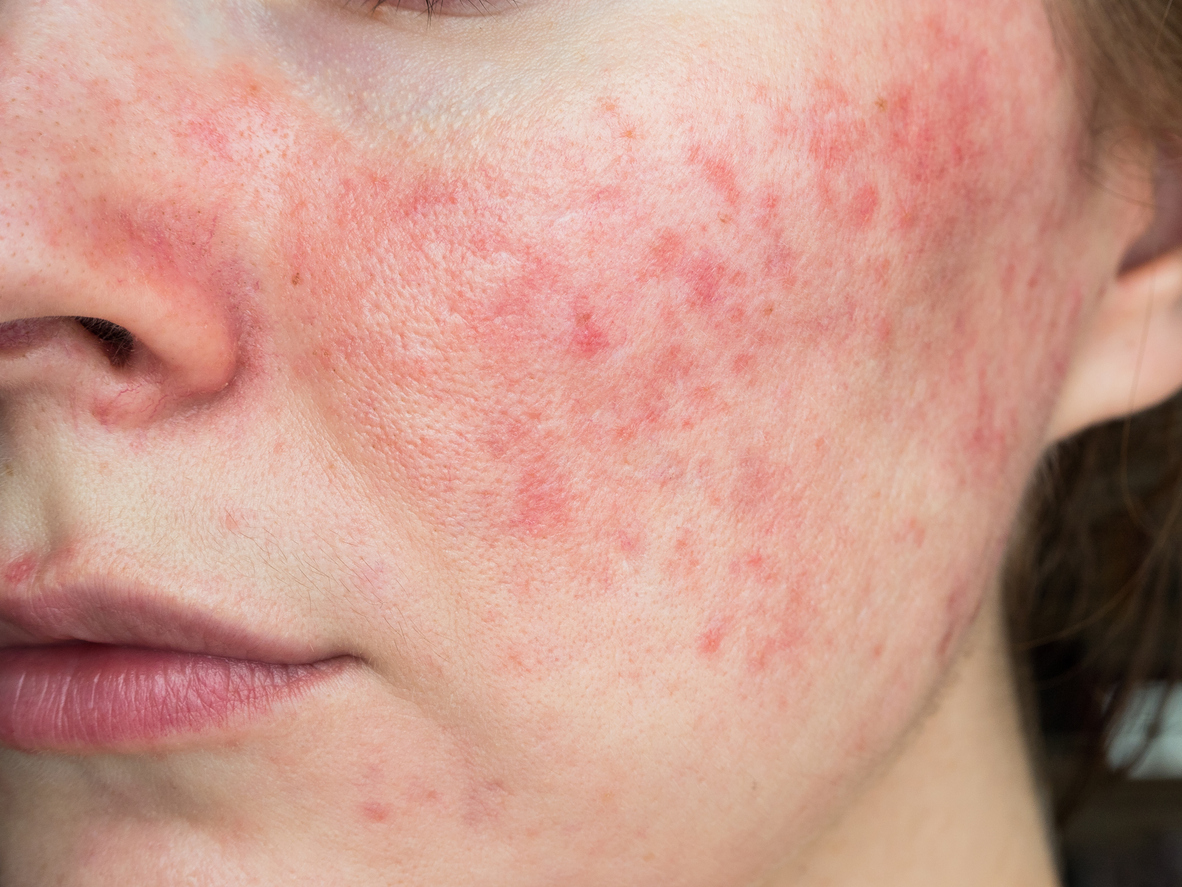Rosacea
Rosacea Dermatolgist in Dallas, TX
Rosacea is a common skin condition affecting more than 14 million people in the US. It causes redness, swelling, visible blood vessels, and even small red bumps on your face. Rosacea often starts with more frequent and noticeable blushing than other people, however, the redness can spread from the cheeks and nose to your forehead, chin, ears, or beyond.

Symptoms
According to the AADA, there are four subtypes of rosacea, each with its own list of signs and symptoms. Some people have multiple subtypes simultaneously, but each can require different treatment.
Subtype 1: Facial Redness, Flushing, Visible Blood Vessels
- Flushing and redness in the center of the face
- Visible broken blood vessels (spider veins)
- Swollen, sensitive skin that may sting and burn
- Dry skin, roughness or scaling
- Tendency to flush or blush more easily than other people
Subtype 2: Acne-like Breakouts
- Acne-like breakouts, usually where the skin is very red
- Oily skin
- Skin may be very sensitive, burn, and sting
- Visible broken blood vessels (spider veins)
- Raised patches of skin called plaques
Subtype 3: Thickening Skin
- Bumpy texture to the skin
- Skin begins to thicken, especially common on the nose (this is called rhinophyma)
- Skin may thicken on the chin, forehead, cheeks, and ears
- Visible broken blood vessels appear
- Pores look large
- Oily skin
Subtype 4: In the Eyes
- Watery or bloodshot appearance
- Dry, itchy eyes that burn or sting
- Eyes sensitive to light
- Blurry vision
- Visible broken blood vessels on an eyelid
- Cyst on the eyelid
Causes
Rosacea is very common and is most commonly appears in people between the ages of 30 – 50, have fair skin, or those who have had or are related to someone with rosacea or severe acne. That being said, anyone can have this skin condition. The exact cause is not certain but scientists believe that several things may play a role including your genes (Rosacea seems to run in families) or an irregular immune system. However, there are many common factors that can trigger flare-ups, including:
- Hot drinks and spicy foods
- Alcohol
- Extreme hot or cold
- Sunlight or wind
- Exercise
- Drugs that dilate blood vessels, including some blood pressure medications
- Certain makeup products, skin creams, lotions, or other cosmetics
Treatment
Rosacea cannot be cured but your dermatologist may be able to offer treatment that reduces the signs of rosacea, alleviates associated pain or discomfort, and prevents your rosacea from worsening. Prescription medications include topical cream or gel that reduces redness, oral antibiotics, or oral acne medications. Laser and light-based therapies may also help reduce redness. Please consult your dermatologist to find the treatment plan that best suits your specific condition.
Self-Care
Although medicine and other therapies can help reduce signs of rosacea, there are a few things you can do to prevent new flare ups. First, it is important to identify and avoid your triggers. You should also mild skin care products and be gentle with your skin care routine. Finally, protect your skin from the sun! Use sunscreen with SPF 30 or higher, wear protective clothing and glasses, and avoid midday sun.
If you have specific questions about your rosacea or are having trouble avoiding flare-ups, schedule an appointment with one of our experienced dermatologists today!
